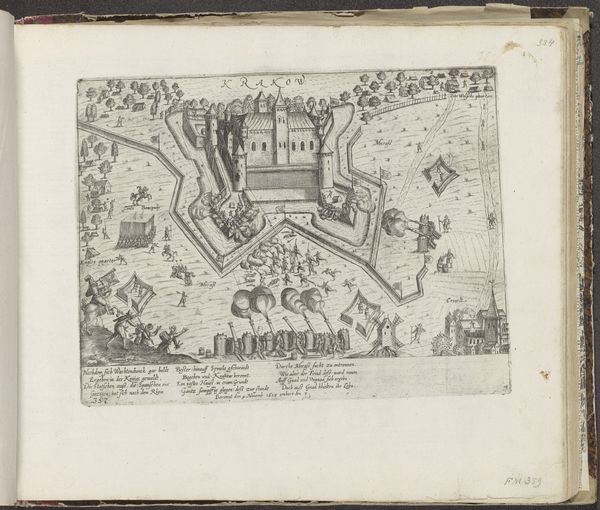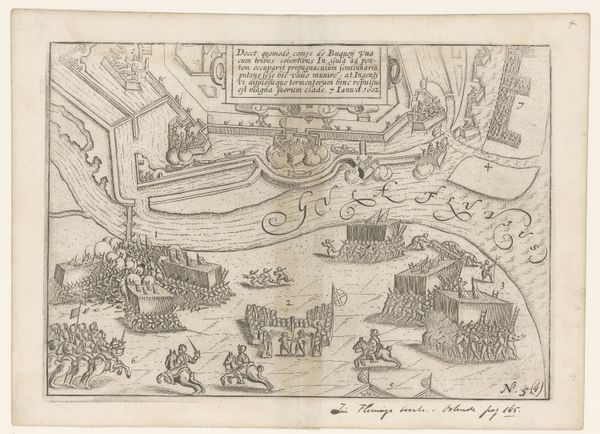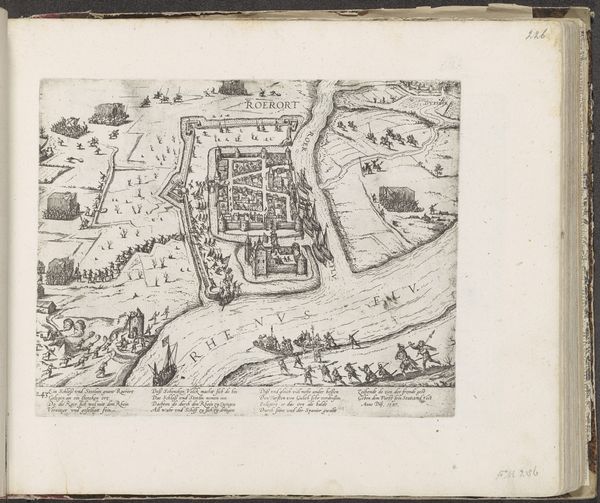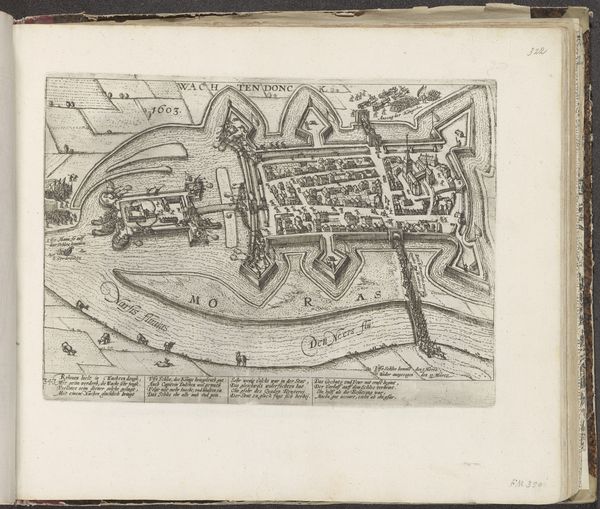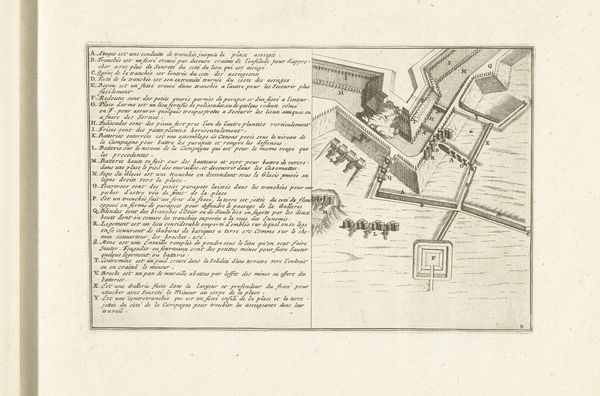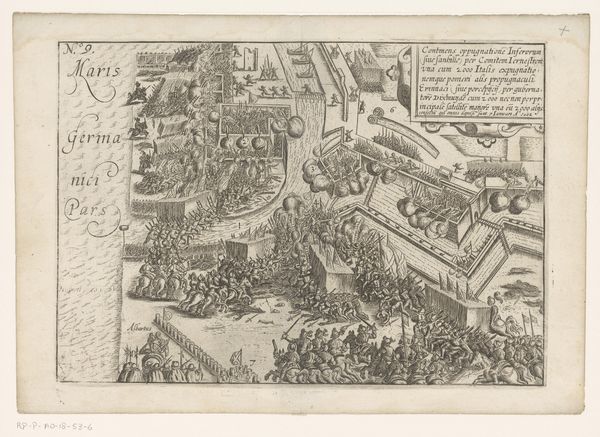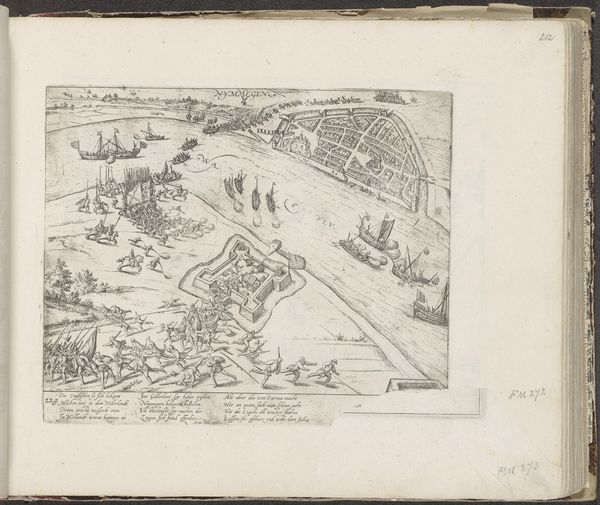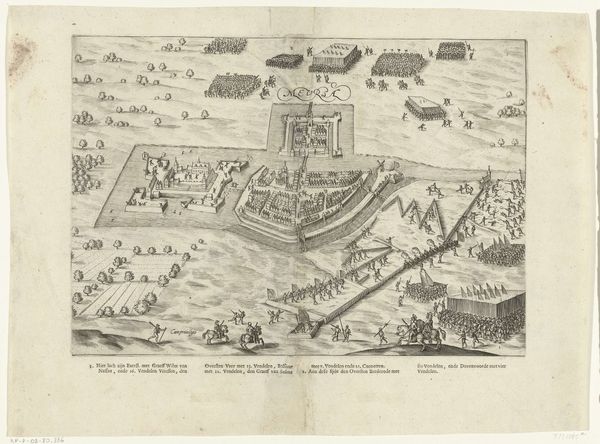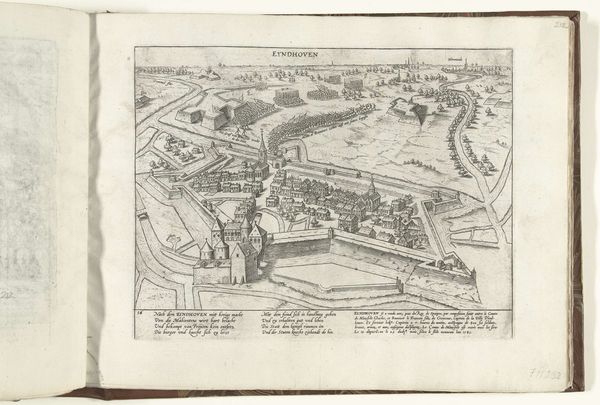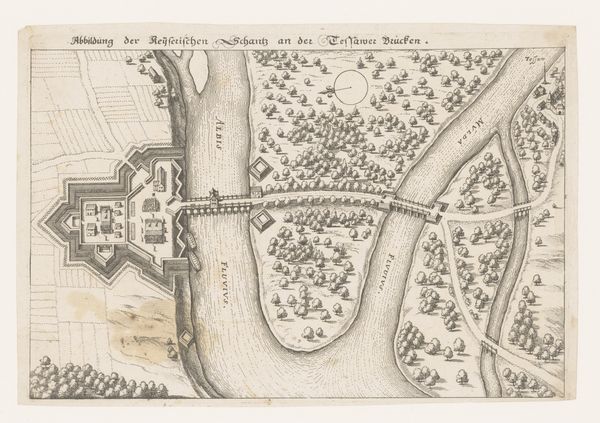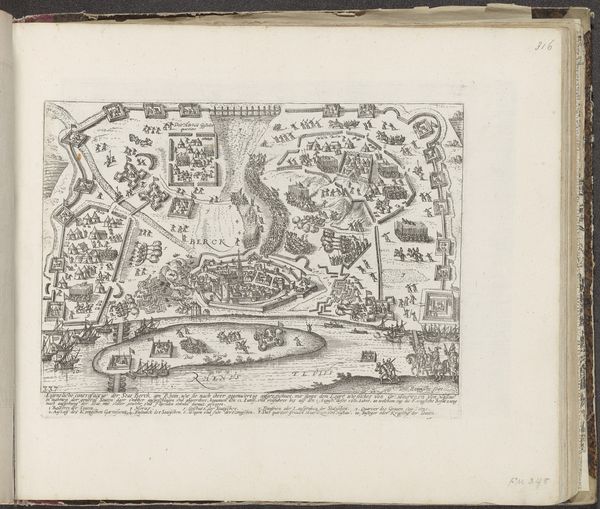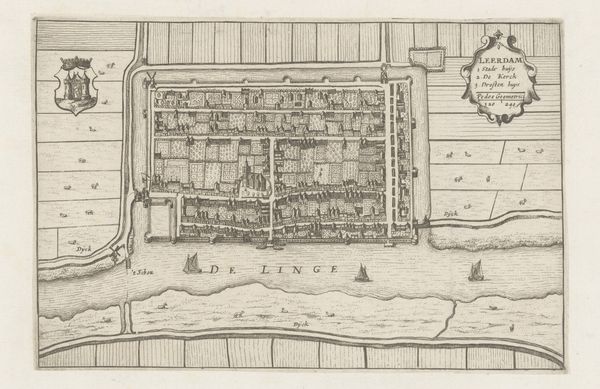
Beleg van Oostende: verovering van de forten in de polder door het Spaanse leger, 1603 1603 - 1615
0:00
0:00
print, etching, engraving
#
baroque
#
dutch-golden-age
# print
#
etching
#
landscape
#
history-painting
#
engraving
Dimensions: height 173 mm, width 241 mm
Copyright: Rijks Museum: Open Domain
This print, made by an anonymous artist in 1603, depicts the siege of Ostend with simple lines on paper. Its power lies in the process of etching, where the artist would have used a sharp needle to draw into a wax-covered metal plate, before bathing it in acid. The lines bitten by the acid would then hold ink, allowing the image to be transferred to paper. Consider the labor involved: from the military engineers who planned the attack on Ostend, to the soldiers who carried it out, to the artist who memorialized it in print. The stark, graphic quality of the etching lends a sense of immediacy to the scene, as though we are witnessing history unfold. The choice of printmaking as a medium is also significant. Prints are relatively inexpensive to produce and can be widely disseminated, making them ideal for spreading information or propaganda. By focusing on the materiality and making of this artwork, we can better understand its historical context and its role in shaping public opinion. It challenges the traditional distinctions between fine art and craft, revealing the political power of images in early modern Europe.
Comments
No comments
Be the first to comment and join the conversation on the ultimate creative platform.

